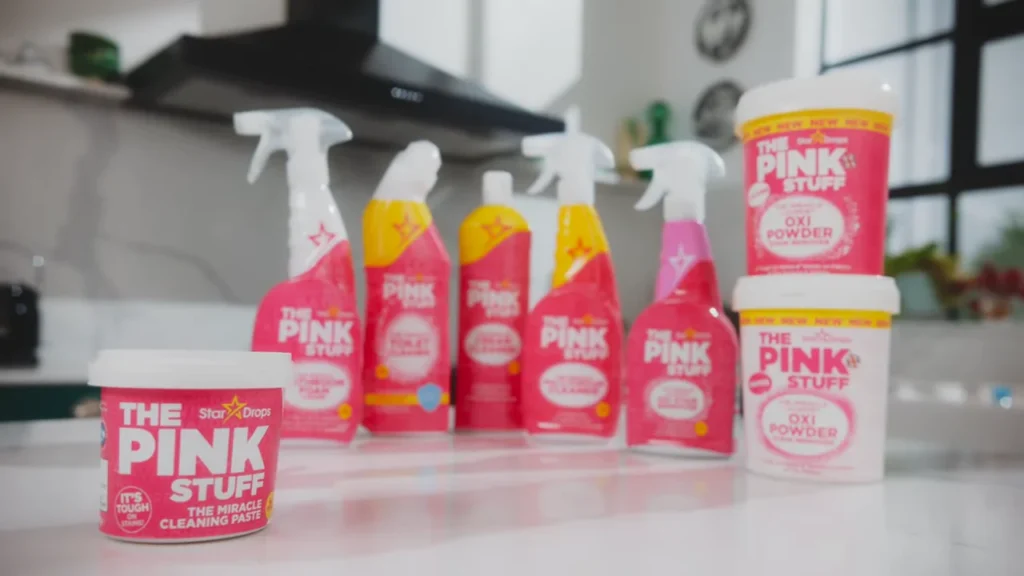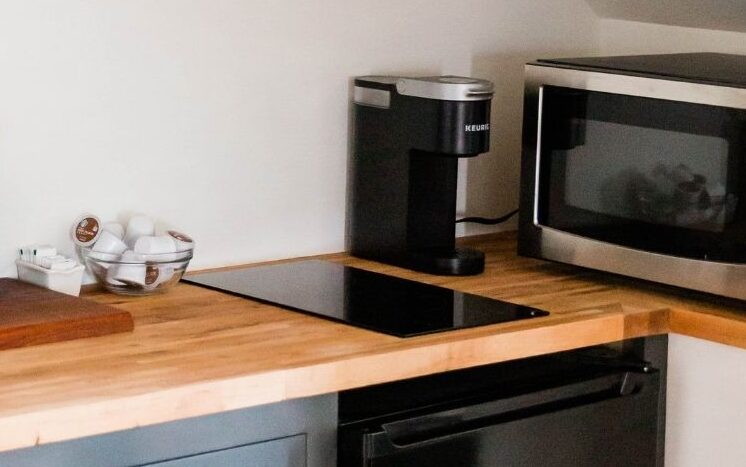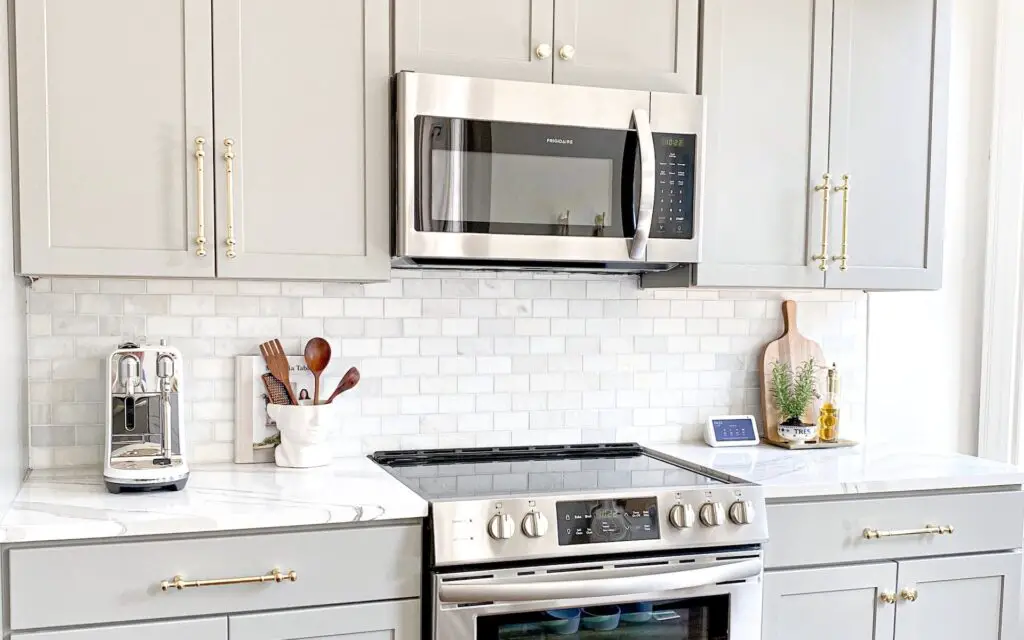Are you tired of dealing with stubborn stains and residue on your glass stove top? Perhaps you’ve heard whispers about the “pink stuff” – that miracle cleaner that seems to work wonders on everything. But can you really use it on your delicate glass stove top without causing damage?
This question lingers in the minds of many homeowners seeking a solution to their kitchen cleaning woes. In this article, we’ll delve into the world of glass stove top maintenance and explore whether the famed “pink stuff” is a friend or foe in the battle against grime.
Get ready to find the truth and discover if your glass stove top can shine bright once again.
Table of Contents
What is Pink Stuff?

Pink stuff, ever heard of it? It’s not just a catchy name; it’s a secret weapon in the world of cleaning that many swear by. Picture this: a gentle yet powerful concoction that can tackle some of the toughest stains and grime around your home. But what exactly is this mysterious pink stuff, and how can you use it to banish dirt and grease with ease?
First things first, pink stuff typically refers to a paste-like cleaning product that comes in bright pink. While its exact composition may vary depending on the brand, it often contains a combination of abrasive particles, surfactants, and other cleaning agents. These ingredients work together to break down and lift away dirt, leaving surfaces sparkling clean.
One of the great things about pink stuff is its versatility. You can use it on a wide range of surfaces, from kitchen countertops to bathroom tiles and even outdoor furniture. Its abrasive nature makes it particularly effective at tackling stubborn stains and grime, making it a popular choice for deep cleaning tasks.
But pink stuff isn’t just for heavy-duty cleaning jobs. It’s also gentle enough to use on delicate surfaces like porcelain and enamel, making it a go-to solution for keeping your favorite dishes and cookware looking their best.
So, how do you use pink stuff to get the best results? It’s simple! Just apply a small amount of the paste to the surface you want to clean, then use a damp cloth or sponge to work it in using gentle circular motions. Allow it to sit for a few minutes to let the cleaning agents do their magic, then rinse away with water. For tougher stains, you can leave the pink stuff to work its magic for a bit longer before rinsing.
The best part? Pink stuff is often affordable and readily available at most supermarkets and home goods stores. So, if you haven’t already given it a try, why not pick up a tub and see for yourself what all the fuss is about?
In summary, Pink Stuff is a versatile and effective cleaning solution that can help you tackle a wide range of household cleaning tasks. Its gentle yet powerful formula makes it a favorite among homeowners looking to keep their spaces clean and sparkling. So, the next time you’re faced with a tough stain or stubborn grime, reach for the pink stuff and prepare to be amazed by the results!
Can You Use the Pink Stuff on Glass Stove Top?

If you’ve got a glass stove top, you know the struggle of keeping it sparkling clean. Those little spills and splatters seem to stand out, don’t they? Now, you might be eyeing that bottle of pink stuff wondering if it’s safe to use on your glass stove top.
Well, here’s the deal: the pink stuff, often a cleaner or abrasive paste, can indeed be used on a glass stove top. But—and it’s a big but—there are some caveats you should keep in mind.
First things first, always check the label. Some pink stuff cleaners are specifically formulated for glass surfaces, while others might be more abrasive and intended for tougher jobs. You want to make sure you’re using the right product for your stovetop.
Secondly, proceed with caution. Even though the pink stuff can work wonders on stains and grime, you don’t want to go at your glass stove top like you’re scrubbing a dirty pot. Gentle, circular motions with a soft cloth or sponge should do the trick. Avoid using anything too abrasive that can scratch the glass surface.
And speaking of scratches, if your glass stove top already has some scratches or marks, you should think twice about using the pink stuff. While it can clean the surface, it’s not a miracle worker when it comes to fixing deeper damage.
Finally, always rinse thoroughly. Once you’ve cleaned your glass stove top with the pink stuff, be sure to rinse it well with water and dry it off completely. You don’t want any cleaner residue hanging around the next time you cook.
So, in summary, yes, you can use the pink stuff on your glass stove top—but do so with care and attention to detail. With the right approach, you can keep your stovetop looking shiny and new for years to come. If you’re interested in maintaining your kitchen appliances, you might also find our article on how to clean oven racks helpful.
How To Use the Pink Stuff on Glass Stove Top?

Using the Pink Stuff on your glass stove top can be a game-changer in your kitchen cleaning routine. But how do you go about it without risking damage or leaving streaks? Let’s dive in.
First off, what is this Pink Stuff everyone’s talking about? It’s a versatile cleaning paste that can tackle a variety of stains and grime. Its mildly abrasive texture makes it perfect for cleaning glass stove tops without scratching them.
To get started, gather your supplies. You’ll need the Pink Stuff, a soft sponge or cloth, and some warm water. Begin by applying a small amount of the Pink Stuff directly onto the glass stove top. Remember, a little goes a long way with this stuff.
Next, using your sponge or cloth, gently work the Pink Stuff into the stains and grime on the stovetop. Circular motions tend to work best, but be careful not to apply too much pressure, especially if your stovetop is glass.
As you work, you’ll notice the Pink Stuff starting to lift away the dirt and grime, revealing a sparkling clean surface underneath. If you encounter stubborn stains, don’t fret. Simply apply a bit more Pink Stuff and give it some extra elbow grease.
Once you’ve covered the entire surface of the stovetop, it’s time to rinse away the Pink Stuff residue. Use a clean damp cloth or sponge to wipe down the surface, removing any leftover cleaner.
Finally, take a dry cloth and give the stovetop a good buffing to remove any remaining moisture and reveal a streak-free shine.
And there you have it! With only a little bit of elbow grease and the power of the Pink Stuff, your glass stove top will be looking brand new in no time. So go ahead, give it a try, and see the magic for yourself.
What is the best glass Stovetop Cleaner?

Now, let’s delve into finding the ideal glass stovetop cleaner for your kitchen needs. Glass stovetops are sleek and modern and add a touch of elegance to any kitchen. However, they can be tricky to keep clean and shiny. That’s where the right cleaner comes in handy.
When it comes to choosing the best glass stovetop cleaner, several factors come into play. Firstly, you want a cleaner that effectively removes grease, grime, and stubborn stains without leaving streaks or scratches on the surface. Nobody wants a shiny stovetop marred by unsightly marks!
One of the top contenders in the realm of glass stovetop cleaners is a non-abrasive formula. Abrasive cleaners might promise a deep clean, but they can also cause microscopic scratches that dull the surface over time. Opting for a non-abrasive cleaner ensures that your glass stovetop retains its glossy finish for years to come.
Moreover, a cleaner that is specifically formulated for glass surfaces ensures optimal results. These cleaners are designed to tackle tough stains and spills without damaging the delicate surface of your stovetop. Plus, they often leave behind a protective layer that helps repel future messes, making cleaning a breeze.
Another important aspect to consider is ease of use. The best glass stovetop cleaner should be convenient to apply and effortless to wipe off. Nobody desires to spend hours scrubbing away at stubborn stains when they could be enjoying a delicious home-cooked meal instead!
Furthermore, it’s worth considering environmentally friendly options. Many glass stovetop cleaners now come in eco-friendly formulations that are gentle on the planet without compromising on cleaning power. By choosing a cleaner that prioritizes sustainability, you can do your part in reducing your environmental footprint.
Ultimately, the best glass stovetop cleaner is one that ticks all the boxes: effective, non-abrasive, specifically formulated for glass surfaces, easy to use, and environmentally friendly. With the right cleaner by your side, you can keep your glass stovetop looking sparkling clean and pristine, ready to dazzle guests and families alike. If you’re looking for tips on how to clean cast iron stove grates, check out our guide on clean uncoated cast iron stove grates.
Does Pink Stuff Scratch Glass?
If you’ve ever had the misfortune of discovering scratches on your glass surfaces, you know the sinking feeling it brings. Whether it’s a delicate window pane or a cherished glass tabletop, scratches can detract from their beauty and functionality. One question that often arises is whether certain items, particularly those with a pink hue, can cause scratches on glass.
Let’s delve into the matter. The color of an object, like a cleaning cloth or sponge, doesn’t inherently determine its scratching potential. Rather, it’s the material composition and texture that play crucial roles. In the case of pink-hued cleaning tools or products, it’s essential to assess their abrasiveness and compatibility with glass surfaces.
Glass, despite its smooth appearance, isn’t impervious to scratches. Even seemingly gentle materials can cause damage if they contain particles or substances that are harder than glass itself. Therefore, it’s prudent to exercise caution and choose cleaning implements wisely.
The concern with pink-colored items may stem from the perception that they could be harsher or more abrasive. However, color alone doesn’t dictate the abrasive nature of a substance. Instead, it’s advisable to scrutinize the ingredients and composition of cleaning products or tools, regardless of their color.
Opting for soft, microfiber cloths or specially formulated glass cleaners can help minimize the risk of scratches. These materials are designed to lift dirt and grime without leaving behind abrasive residue. Additionally, using gentle, circular motions during cleaning can mitigate the chances of inadvertently scratching the glass surface.
Ultimately, the key lies in understanding the properties of the materials you’re using and employing gentle, effective cleaning techniques. While the color of a cleaning product or tool may catch your eye, it’s the composition and texture that truly determine its suitability for glass surfaces.
Conclusion:
Using the pink stuff on a glass stove top can indeed be effective for tackling tough stains and grime. While caution is advised due to the abrasive nature of some formulations, many users have reported successful outcomes when used sparingly and with gentle application techniques. It’s crucial to prioritize the protection of the stove’s surface to prevent scratches or damage. As with any cleaning product, testing in a small, inconspicuous area before widespread use is wise.
Ultimately, with careful consideration and proper application, the pink stuff can be a valuable ally in keeping the cleanliness and shine of your glass stove top. So, while it’s not without its risks, judicious use of the pink stuff can help you achieve that sparkling, spotless finish you desire.


